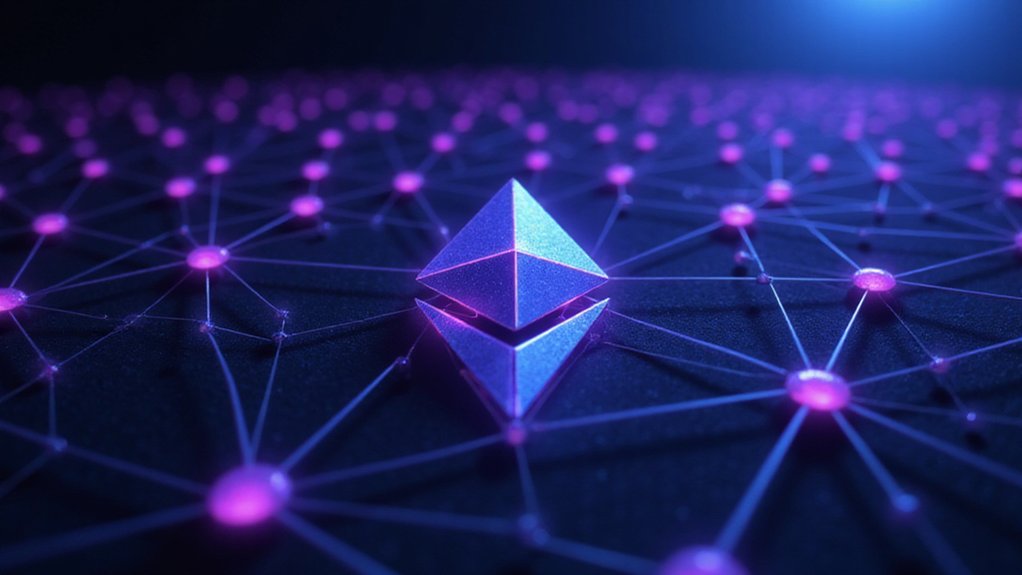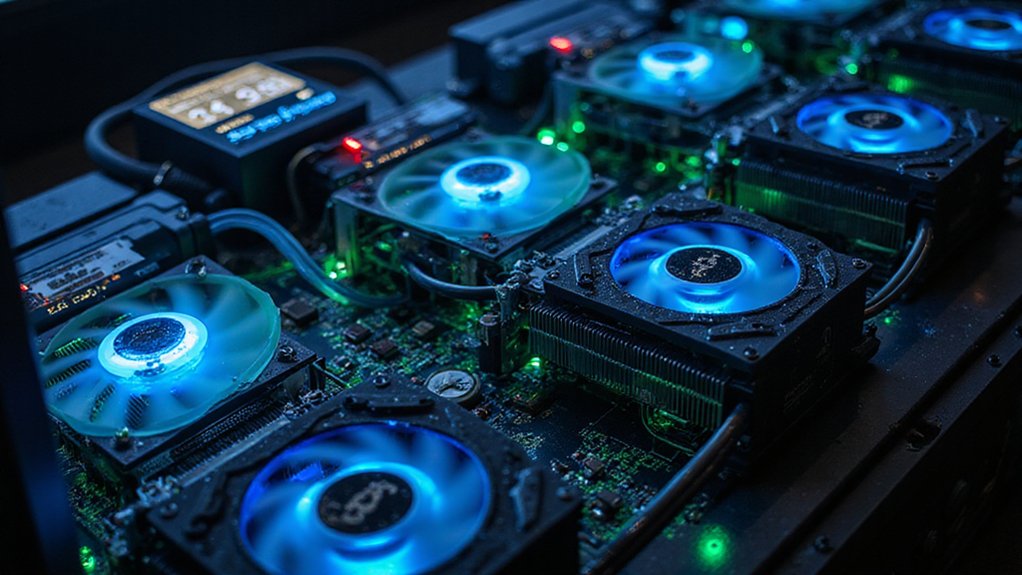Sui, a blockchain created by ex-Meta engineers in 2023, represents a paradigm shift in digital asset management. Its object-oriented architecture processes transactions like a multi-lane highway, handling billions of operations across millions of accounts. The Move programming language underpins its security and speed advantages over Ethereum and Solana. With price predictions for 2025 ranging from $3.80 to $17.57, Sui‘s scalability makes it a compelling—if volatile—prospect for DeFi enthusiasts and NFT marketplaces alike. The technical innovation merits further exploration.

What happens when former Meta engineers decide to revolutionize blockchain technology?
Sui emerges—a formidable Layer 1 blockchain created by Mysten Lab founders Evan Cheng, Adeniyi Abiodun, Sam Blackshear, George Danezis, and Kostas Chalkias.
Launched in May 2023, this platform represents a paradigm shift in how digital assets operate, with each asset existing as its own object—a departure from conventional blockchain architectures that, frankly, seem positively antiquated by comparison.
The technical prowess of Sui cannot be overstated.
The technical architecture of Sui represents quantum-level advancement in blockchain design—elegantly efficient, ruthlessly scalable, undeniably revolutionary.
Processing transactions akin to a multi-lane highway (rather than the single-file approach of its predecessors), the network has demonstrated capacity for over 4.58 billion transactions across 18.19 million active accounts.
This remarkably efficient system leverages the Move programming language, enhancing both security and operational effectiveness while maintaining blazing speeds that would make competing protocols blush.
While not as established as Ethereum with its thousands of DeFi projects, Sui’s ecosystem fosters a vibrant landscape for decentralized applications, with the eponymous coin serving as the lifeblood for governance and transactions.
Sui’s ecosystem fosters a vibrant landscape for decentralized applications, with the eponymous coin serving as the lifeblood for governance and transactions.
The platform’s staking mechanisms encourage participation—a shrewd move in an increasingly competitive market where user engagement often dictates survival.
In the domain of practical applications, Sui’s architecture proves particularly suited to DeFi protocols, NFT marketplaces, and gaming ventures where transaction velocity matters.
Market projections suggest an intriguing trajectory, with 2025 price predictions ranging from $3.80 to $17.57 (average $10.67).
Elevated RSI levels indicate robust buying interest—though one must remember that in crypto markets, today’s darling can become tomorrow’s cautionary tale.
When juxtaposed with established competitors like Solana, Sui’s technological advantages merit consideration, but so too do the inherent risks that accompany any emerging digital asset.
Investment decisions ultimately hinge on one’s risk tolerance and time horizon.
The platform’s exceptional scalability presents compelling upside potential, yet prudence dictates acknowledgment of the volatility endemic to cryptocurrency markets.
Sui represents innovation worth watching—perhaps even worth wagering on, for those with appropriate risk appetites.
Frequently Asked Questions
How Does Sui Compare to Ethereum and Solana?
Sui outpaces both networks in transaction speed (297,000 TPS versus Ethereum’s 15 and Solana’s unspecified high rate) while maintaining competitive finality times of 390 milliseconds.
Its Move programming language offers inherent safety advantages over Ethereum’s Solidity, though Ethereum maintains the largest developer ecosystem.
While Solana boasts more processed transactions (1.8 billion to Sui’s 1 billion), Sui’s architecture prioritizes safety and accessibility—arguably vital features for long-term viability in the blockchain arms race.
What Safeguards Protect Sui Users From Potential Hacks?
Sui employs multiple safeguards against potential hacks, including advanced cryptography through the Move programming language (which inherently prevents reentrancy attacks), third-party audits covering nearly half of ecosystem projects, and the recent Blockaid partnership targeting smart contract vulnerabilities.
Quantum computing resilience features—notably cryptographic agility and compliance with NIST guidelines—further fortify the network.
The ecosystem’s security monitoring and bug bounty programs create additional protective layers while community governance enables stakeholders to address emerging threats collaboratively.
Is Sui Environmentally Sustainable Compared to Bitcoin?
Sui’s delegated proof-of-stake consensus mechanism represents a dramatic environmental improvement over Bitcoin’s energy-guzzling proof-of-work system.
While Bitcoin consumes more electricity than some nations (an inconvenient truth its evangelists often sidestep), Sui processes transactions with minimal computational demands.
Its validator network eliminates the need for massive server farms, reducing both energy consumption and carbon emissions.
The stark contrast in environmental impact makes Sui’s approach—processing transactions at a fraction of Bitcoin’s ecological cost—increasingly attractive in a climate-conscious market.
Can Retail Investors Participate in Sui Staking?
Retail investors can indeed participate in Sui staking with remarkable accessibility.
The network’s delegated Proof-of-Stake mechanism accommodates investors of all sizes—no minimum thresholds required—through various wallets and staking services like Bit2Me and Kiln.
Investors simply delegate their SUI tokens to validator pools, earning compound interest while contributing to network security.
This democratic approach (a welcome deviation from crypto’s occasional elitism) offers predictable passive income, though the usual caveats of market volatility naturally apply.
What Real-World Applications Is Sui Currently Powering?
Sui currently powers a diverse array of real-world applications, most especially in gaming where players can genuinely own and trade in-game assets.
The ecosystem has gained significant traction in NFT marketplaces, allowing artists to mint and sell digital creations with verifiable ownership.
DeFi platforms leveraging Sui’s scalability offer staking and yield farming opportunities, while emerging social dApps utilize its infrastructure for blockchain-based social interactions.
The platform’s emphasis on ownership and rapid transaction finality makes it particularly suitable for these user-centric applications.









